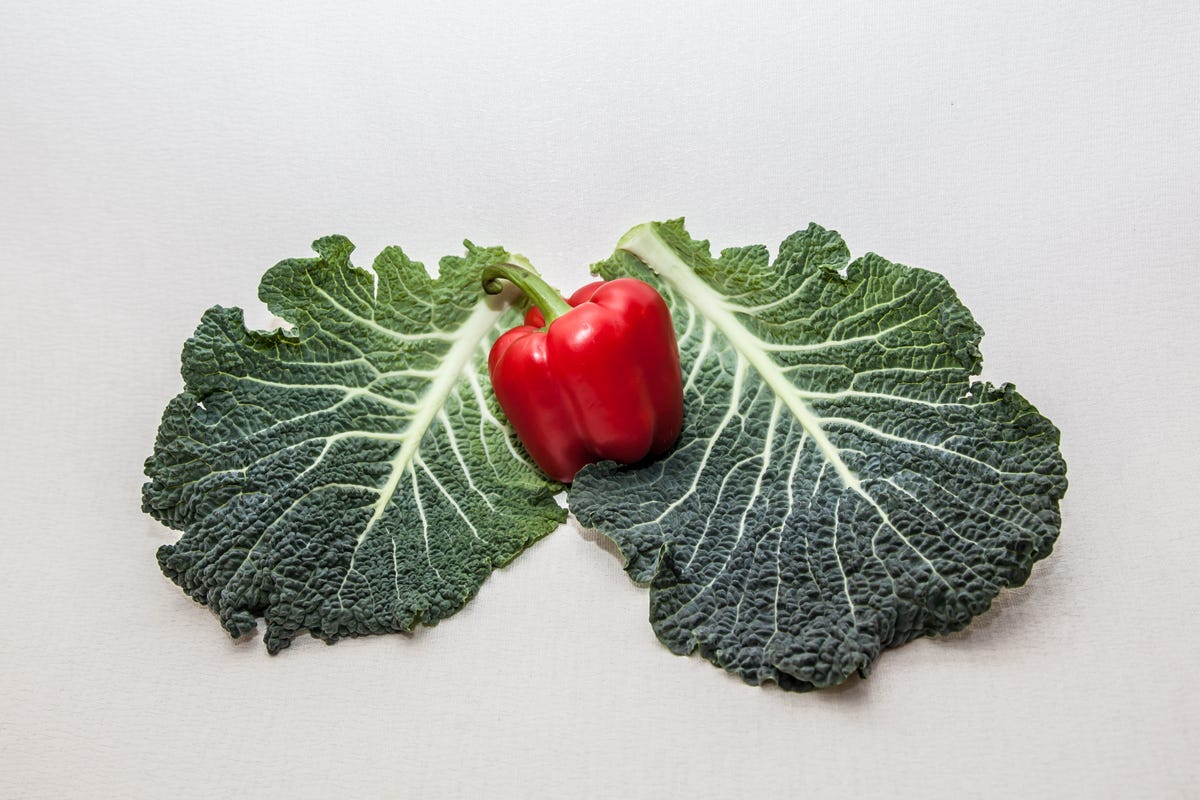What are the major 14 foods for healthy lungs and improved breathing? In the frenetic pace of our lives, we often forget to appreciate the air we breathe. However, the health of our lungs, the very organs that are responsible for this vital exchange, has a huge effect on our energy levels, overall well-being, and even mood.

Although environmental factors heavily impact respiratory well-being, the food we eat can be a significant partner in keeping these crucial organs in check and facilitating effortless inhaling and exhaling.
Just as some nutrients support our heart or brain health, certain compounds in some foods can lower airway inflammation, limit lung tissue damage, and improve breathing function.
Lung-loving Foods to Help You Breathe Easy
Whether you want to reduce the impact of air pollution, control a respiratory illness, or simply maximize your lung health, the addition of these 14 foods to your diet can be a game-changer.
Let’s explore the healing benefits of each.
1. Oxygen-Rich Arias: Leafy Green Vegetables
That means things like spinach, kale, collard greens, and romaine lettuce. These colorful veggies are rich in antioxidants, particularly carotenoids such as lutein or zeaxanthin, which have been associated with a decreased risk of lung cancer.
They are also rich in chlorophyll, which may assist in detoxifying these organs. In addition, they’re great sources of vitamins and minerals, which are also important for overall immune function and, indirectly, respiratory health.
Ways to use them: Blend them into smoothies, sauté them for a side dish, or add them liberally to salads and soups.
2. Bright Berries
Blueberries, strawberries, raspberries and blackberries are all also packed with anthocyanins, which are strong antioxidants that fight oxidative stress and currently research has found inflammation in the body, including the lungs.
There’s also some observational data to suggest that increased consumption of berries is linked to slower age-related decline in lung function.
How to eat them: Snack on them, add to yogurt or oatmeal, or combine them into delicious smoothies.
3. Fatty Fish: Relief Rich in Omega-3
Salmon, mackerel, sardines, and tuna are rich in omega-3 fatty acids, powerful inflammation-fighters. Chronic inflammation can constrict airways and hinder breathing.
Fatty fish (on the other hand) help reduce this inflammation, which can support easier breathing. Omega-3s have also been known to help reduce the risk of asthma and may improve lung function in nature in those with respiratory conditions.
How to include them: Get at least two servings a week of fatty fish. For a healthy and flavourful meal just bake, grill or pan-sear them.
4. Apples: Flavonoid Fortress
Maybe an apple a day also keeps respiratory disorders away. A big apple contains a lot of flavonoids, especially quercetin, which is rich in antioxidant and anti-inflammatory properties.
Research has shown that apple eaters have a lower risk of asthma and better lung function.
How to use them: Eat them as a snack, dice them into salads, or bake them into healthy desserts.
5. Garlic: Nature’s Decongestant
The medicinal properties of garlic have been known for centuries, including its effects on the health of the respiratory organs.
It features allicin, which provides strong anti-inflammatory and antimicrobial properties. Garlic can help clear congestion, fight respiratory infections, and improve breathing.
How to use it: Sprinkle liberally in your cooking, from stir-fries and pasta sauces to soups and stews.
6. Ginger: A Spice That Soothes Airways
Another potent anti-inflammatory is ginger, which offers positive benefits for lung function. It can also help relax the smooth muscles in the airways, which may relieve breathing difficulties in asthma or other respiratory conditions.
Ginger may also aid with a reduction in mucus production and irritation in the airways.
How to use it: Brew it in a therapeutic tea, use it in stir-fries and curries, or grate it into smoothies.
7. Turmeric: The Lung-Loving Power of Curcumin
Turmeric contains the active compound curcumin, well known for its powerful anti-inflammatory and antioxidant effects.
Research indicates that curcumin can improve the lung function of people suffering from asthma and chronic obstructive pulmonary disease (COPD).
How to use it: Cook with turmeric powder, include it in smoothies, or drink a warm turmeric latte. Take it with black pepper for better absorption.
8. Olive Oil: Healthy Fat Optimize Lung Function
Extra virgin olive oil is high in monounsaturated fats and antioxidants such as vitamin E and polyphenols.
These compounds may relieve inflammation throughout the body, including the lungs. Some studies have suggested that heeding a high-olive-oil diet might also lower asthma risk.
How to use it: As your main cooking oil, drizzled on salads, or to dip whole-grain bread in.
9. Whole Grains: Sustained Energy and Respiratory Support
Choose brown rice, quinoa, oats, and whole-wheat bread instead of refined grains. They are complex carbohydrates that provide long-lasting energy and are high in both fibre and antioxidants.
While fiber itself may not directly affect lung health, maintaining a healthy gut microbiome through fiber intake can support overall immune function and the regulation of inflammation.
How you can incorporate them into your diet: Choose whole-grain options for meals and snacks.
10. Pumpkin and Carrots: Beta-Carotene Power
These brightly-hued orange vegetables are rich in beta-carotene, a precursor to vitamin A, which is essential for keeping the lining of the respiratory tract healthy. Vitamin A also helps with immune function.
Consumption of a sufficient amount of beta-carotene is also protective against respiratory infections.
How to use them: Roast them as a side, toss them into soups and stews, blend them into smoothies.
11. Nuts & Seeds: Nut and Seed-Heavy Vitamin E & Magnesium
Nuts — almonds, walnuts, flaxseeds, and chia seeds — are rich in vitamin E, a powerful antioxidant that protects lung cells from damage.
They’re also good sources of magnesium, a mineral that helps relax the smooth muscles in the lung airways and ease breathing, especially for people with asthma.
How to eat them: Snack on them, sprinkle them on salads or yogurt, or add them to smoothies.
12. Beverages That Help With Breathing: Coffee and Green Tea
However, both coffee and green tea can be advantageous for lung health when consumed in moderation. It has caffeine, which may have a mild bronchodilator effect, temporarily opening airways and improving breathing in some people with asthma.
Green tea is high in antioxidants known as catechins, which have anti-inflammatory effects and may protect the lungs from damage.
How to use them: Drink a cup or two each day, although check your caffeine tolerance.
13. Water: The Critical Hydrator for Airways Health
Adequate hydration is important for general well-being, and lung function is no exception.
Water is important to ensure that the mucus lining the sides and back of the airways remains thin and loose and that irritants are coughed out, keeping the breathing passage clear. Dehydration can also thicken mucus, making it harder to breathe.
How to use: Try to drink lots of water throughout your day.
14. Dark Chocolate: Indulgence with Possible Perks
Believe it or not: Dark chocolate — with a cocoa content of 70 percent or more — contains the compound theobromine, which can relax the smooth muscles in the airways much like caffeine.
Its antioxidant properties are an added bonus. Because of its calories and sugar, moderation is important.
How to use it: Treat yourself to a small square of high-quality dark chocolate once in a while.
The Comfort of Food: Keeping the Lungs Healthy
Though eating these foods can go a long way toward helping heal your lungs and reduce breathlessness, they are not a royal road to health: your diet is only one part of the equation.
Staying active, not smoking or being exposed to secondhand smoke, managing stress, and ensuring healthy air quality in your home are just as important for respiratory health.
Listen to Your Body
Including spices in our diet is always beneficial, but if you have any underlying health issues or if you are facing more breathing issues, it is best to seek a medical opinion or advice from a registered dietitian.
They can assist you with devising a diet plan that will best support your unique needs and overall health.
In Conclusion
Eating the right foods is a simple and tasty way to get ahead of lung and breathing problems in general.
Nurturing your respiratory system with a healthy diet filled with these beneficial food compounds will lead to easier breathing, promoting better overall health and vitality. So load up your plate with these lung-loving eats and take a deep breath — your body will thank you for it.
